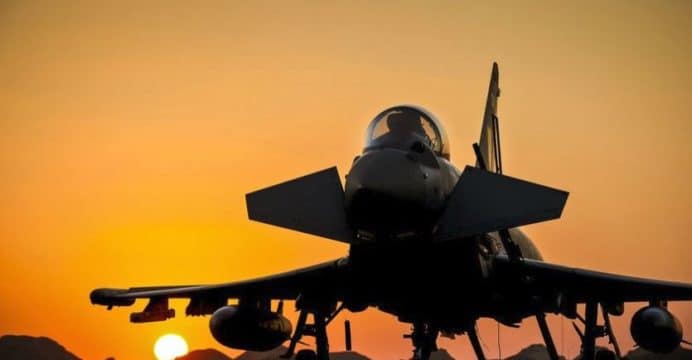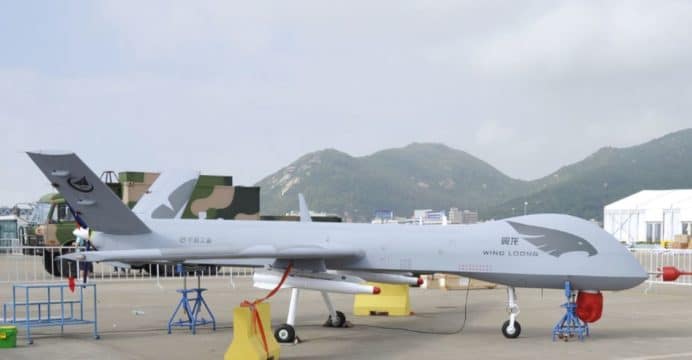The Trouble with Bangladesh's Military
Bangladesh’s military is more concerned with profit and power than defending the country.
The
, totaling $3.2 billion in the year 2017-2018, according to official statistics. Yet Bangladesh’s military has proved to be incapable of showing strength in the face of repeated violations of its land,
, and
by neighboring Myanmar.
Bangladesh’s military has failed to restore public confidence that it can defend the country’s territorial sovereignty. If there is an overriding message from these debacles, it is that the military is ill-equipped to defend the state because it has been practically unaccountable since the very foundation of Bangladesh. Instead, the military has captured much of the bedrock of the state it is supposed to defend.
The Bangladesh military inherited both the institutional framework of its British Indian and Pakistan Army predecessors, as well as their orientation against civilian rule and their sensitivity to political power. The Bangladesh military has directly ruled the country for 15 of its 46 years of existence.
On September 15, 1991, a parliamentary system of government was proposed in the
, and a constitutional referendum ratified the institutional framework for parliamentary democracy in Bangladesh. Still, to date, even Bangladesh’s democratically elected civilian leaders have been forced to tread carefully around the military. Some current Bangladeshi politicians have a military background, and often discourage the government from engaging in military matters.
Many developing countries, even those with generally democratic governments, have very weak oversight of defense matters. Bangladesh is no different. For historical reasons, many believe that the military sector is a “no-go area” for civilian oversight. State security is often used as an excuse for secrecy, resulting in insufficient transparency in defense budgeting and procurement. The defense sector believes that they require special treatment compared to other public sectors since they deal with national security matters. The military itself discourages “interference” from parliament, or from the civilian government.
Further complicating things, Bangladesh’s armed forces also have a dual role as internal security forces. The
is repeatedly called on to prevent civil unrest. For example, the
amid unrest when the two major political parties were battling over who would come to power.
The dual role causes significant issues of prioritization. Bangladesh’s military must juggle its national security and internal stability responsibilities, in addition
and disaster relief operations.
In addition, the political involvement of the military in internal affairs makes it hard for the civil administration, such as the Ministry of Defense and parliament, to hold the the military accountable.
The
) is the principal administrative organization by which military policy is formulated and executed. The
should exercise authority over the Armed Forces; however, it is far less potent than the AFD. Weak governance, civil authority, and lack of accountability make it difficult to see defense policies executed.
Currently, both the AFD and the MoD are headed by the prime minister of Bangladesh. To coordinate military policy, both the president (who is also the commander-in-chief of the military) and the prime minister of Bangladesh are advised by a six-member advisory board, three chiefs of staff, the principal staff officer of the AFD, and military secretaries to the president and the prime minister. The current convoluted military and civilian organization make it hard for the government to push through changes in military structure or defense procurement.
For example, the defense budget is not well planned and executed based on national security but rather is focused on a procurement list catered for
. As a result, Bangladesh military budgeting and expenditure processes fall short of international best practices.
Bangladesh’s defense procurement suffers from a disconnect between policy and budgeting and procurement practices. Military budgeting and procurement should be linked to established defense policy goals, not Forces Goal 2030. Because decision-making is carried out in a policy vacuum, the result is wasting money on unnecessary systems while failing to meet genuine security needs. There is also an enhanced risk of corruption.
Weak monitoring, controls, and audits facilitate corruption and waste. Sometimes the parliament, the auditor general of Bangladesh, and the anti-corruption watchdog are reluctant to investigate the military — or even actively prevented from doing so. Even in the absence of dishonesty, failure to implement due process often leads to purchases of high-cost items of questionable strategic purpose, severe delays, and cost overruns.
Bangladesh provides limited information on military expenditures, other than a headline defense budget figure. Often, the military expenditure figures are not defined, or the definitions have changed, and it is not clear whether figures are linked to budgeted expenditures or not. Bangladesh systematically excludes significant items from its expense reporting; it also bans disclosing expenditures for arms imports, similar to other developing nations.
It has been well-documented
that the international arms trade and, more specifically, arms procurement practices in Asia, Africa, and the Middle East are highly susceptible to waste and corruption. Bangladesh military’s off-budget spending is often contributed to the military’s business activities, rather than national defense.
Following the
, Sena Kallyan Sangstha (SKS), a concern of the Bangladesh Army, operates a dairy farm and an ice cream factory.
that the Bangladeshi military
food, textile, jute, garment, electronic, real estate, automobile, shipbuilding, manufacturing, and travel businesses. The military also operates Trust Bank and the Ansar VDP Bank, and has a record of giving illicit loans from these institutions to top officers. According to the
BBC investigation, the Bangladesh Army’s business interests further include power plants, roads, infrastructure, and
s, amounting to billions of dollars of private assets.
In 2009, the Bangaldesh Rifles (
“was partly fuelled by resentment among the BDR’s rank-and-file over the corruption of army officers engaged in the retail sale of consumer items,”
BBC notes, citing Bangladesh’s official report on the incident.
Some leading Bangladeshi figures in the business sector have admitted that military-owned businesses are virtually indistinguishable from other commercial enterprises in the way they operate. The irony is that military business interests have thrived more under the civilian rule than under the
of General Hossain Mohammad Ershad.
However, as Bangladesh’s military ambitions develop, it’s past time for a debate about whether the military should engage in such business activities or instead concentrate on national security and protection of sovereignty.




